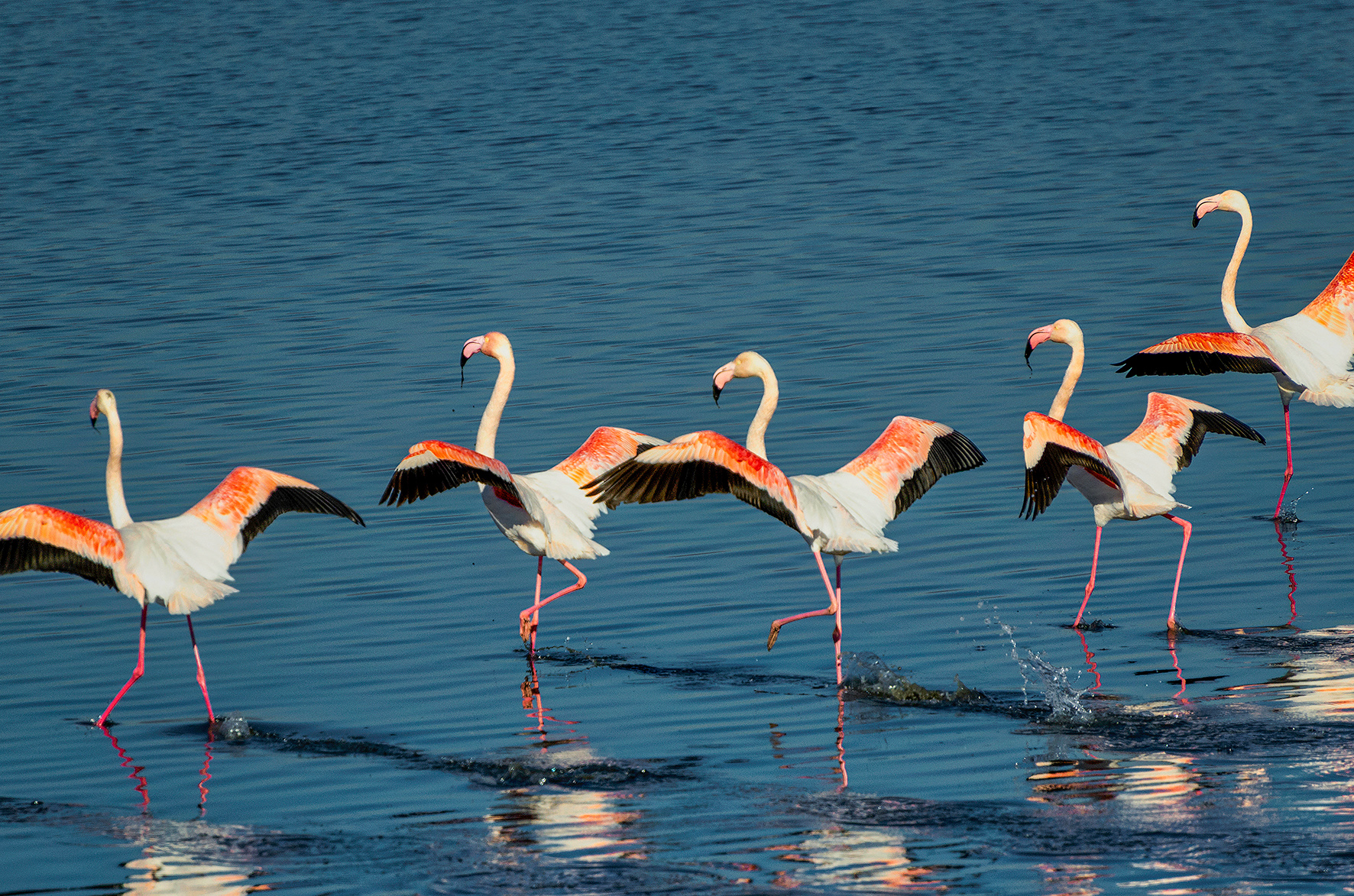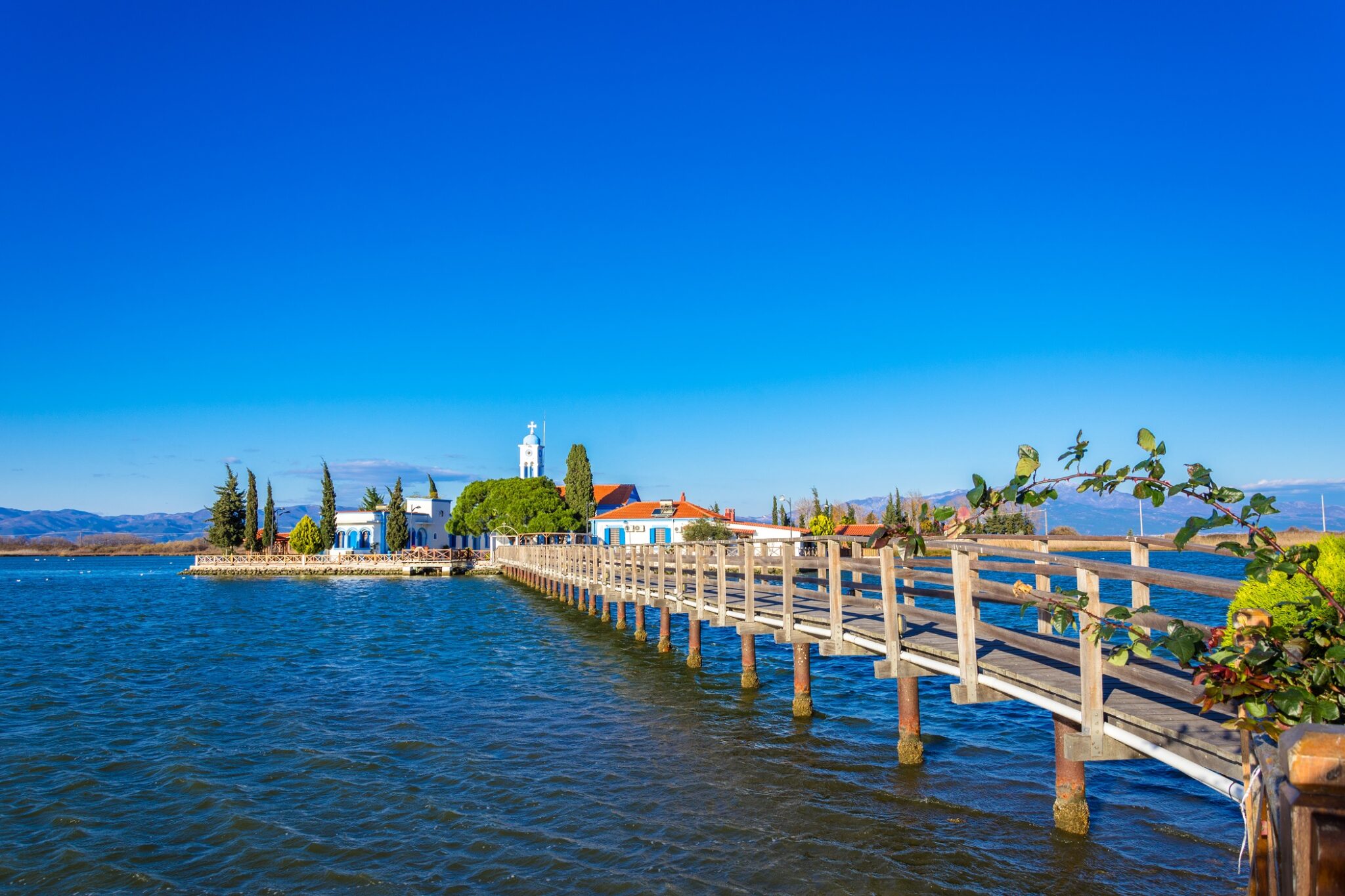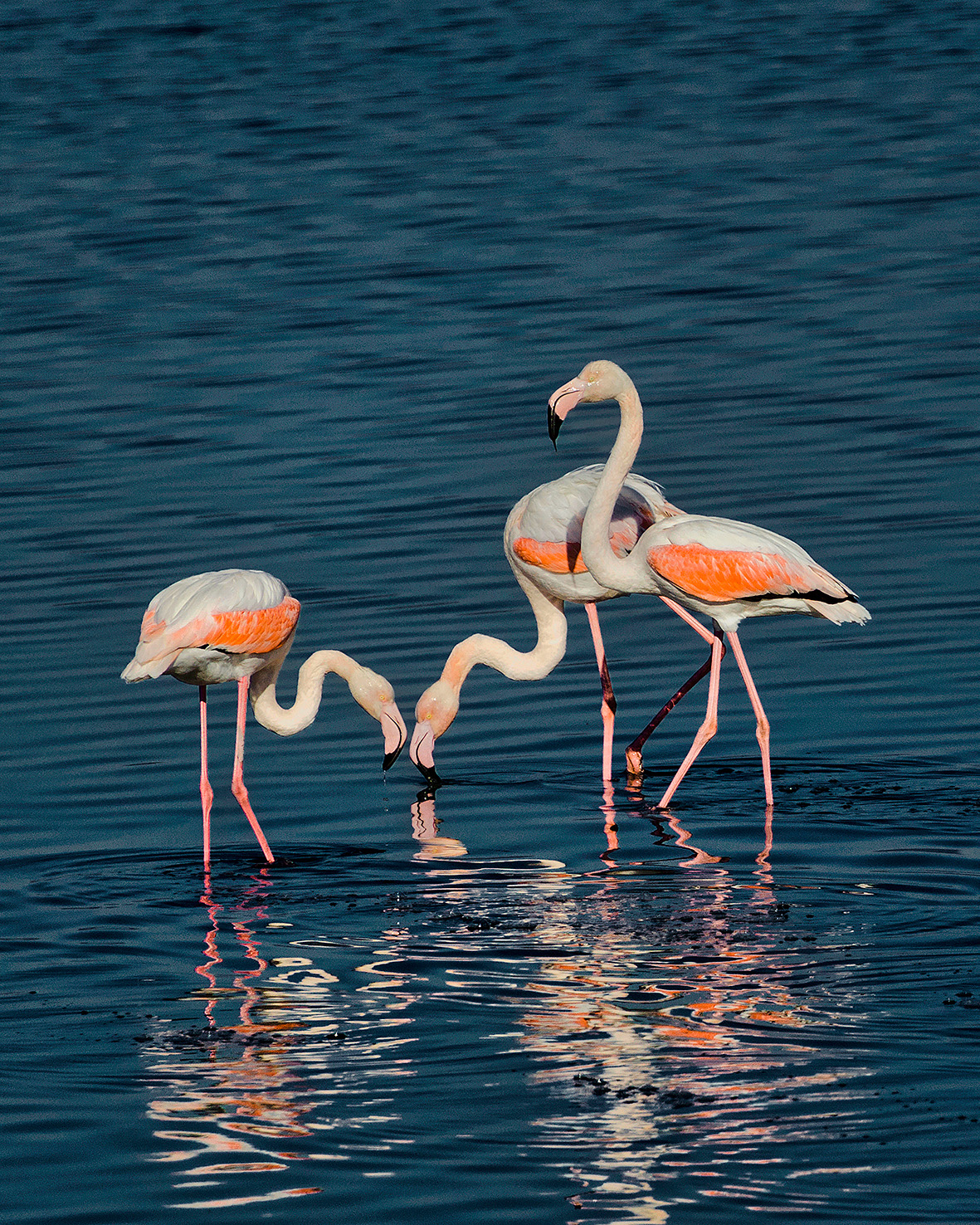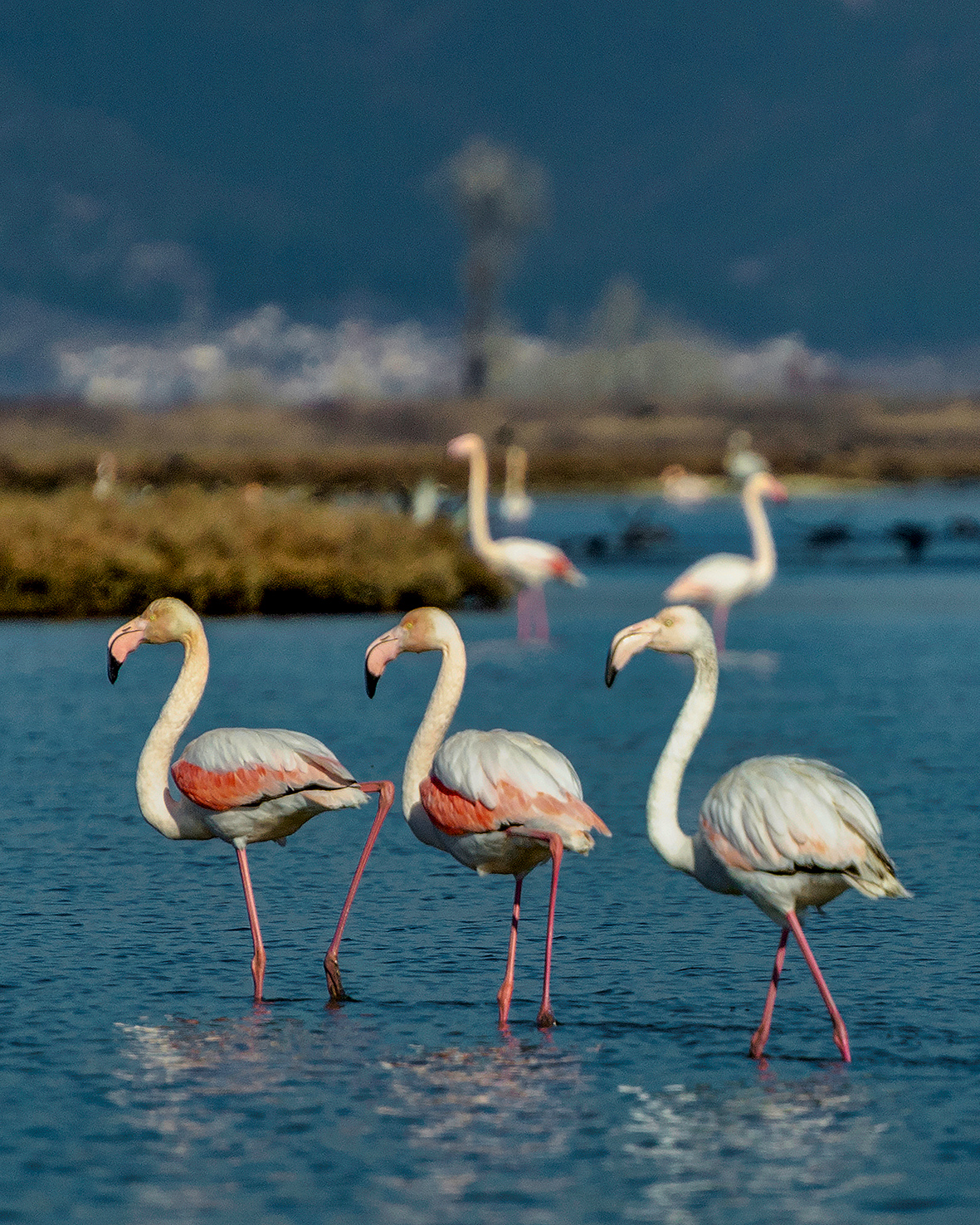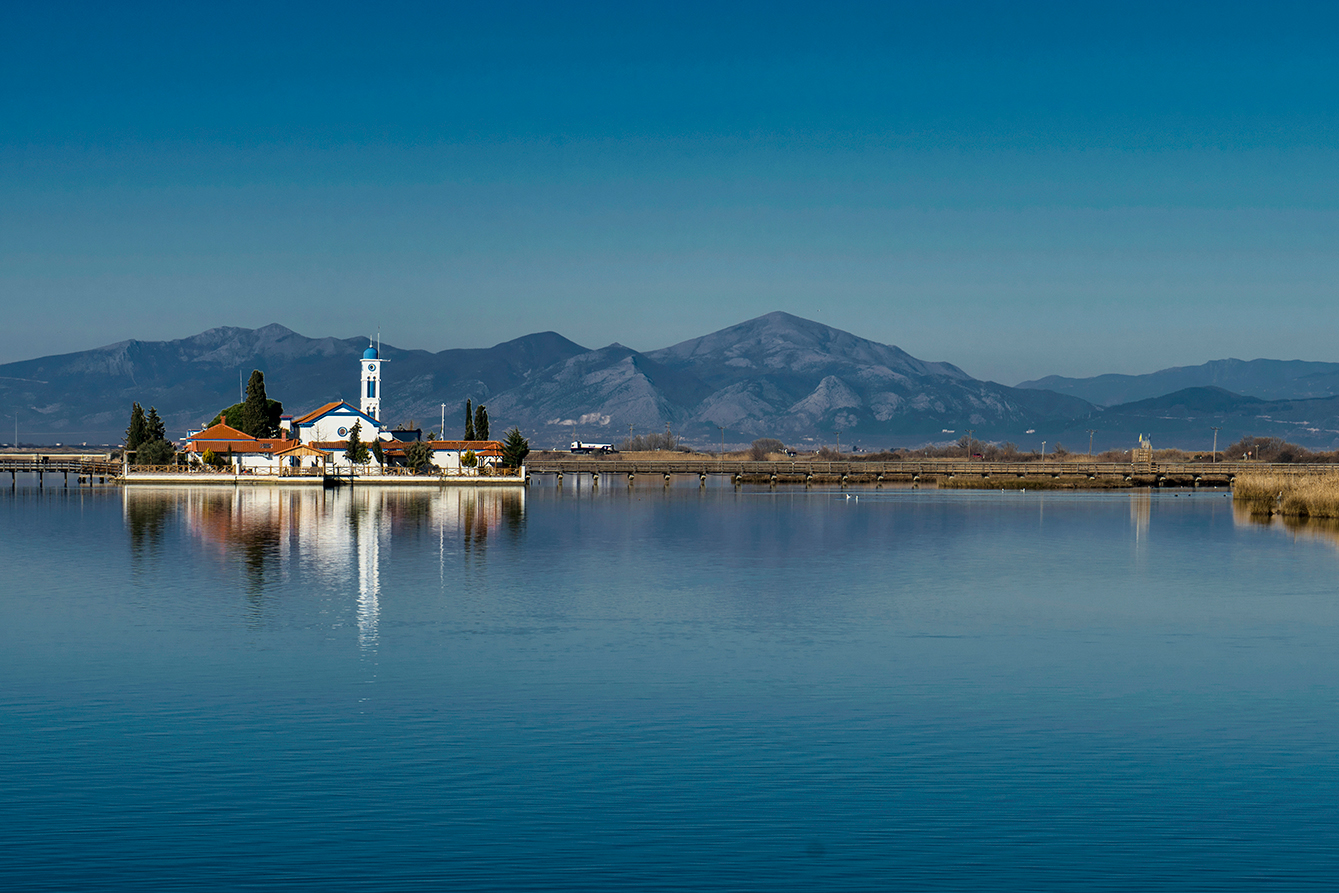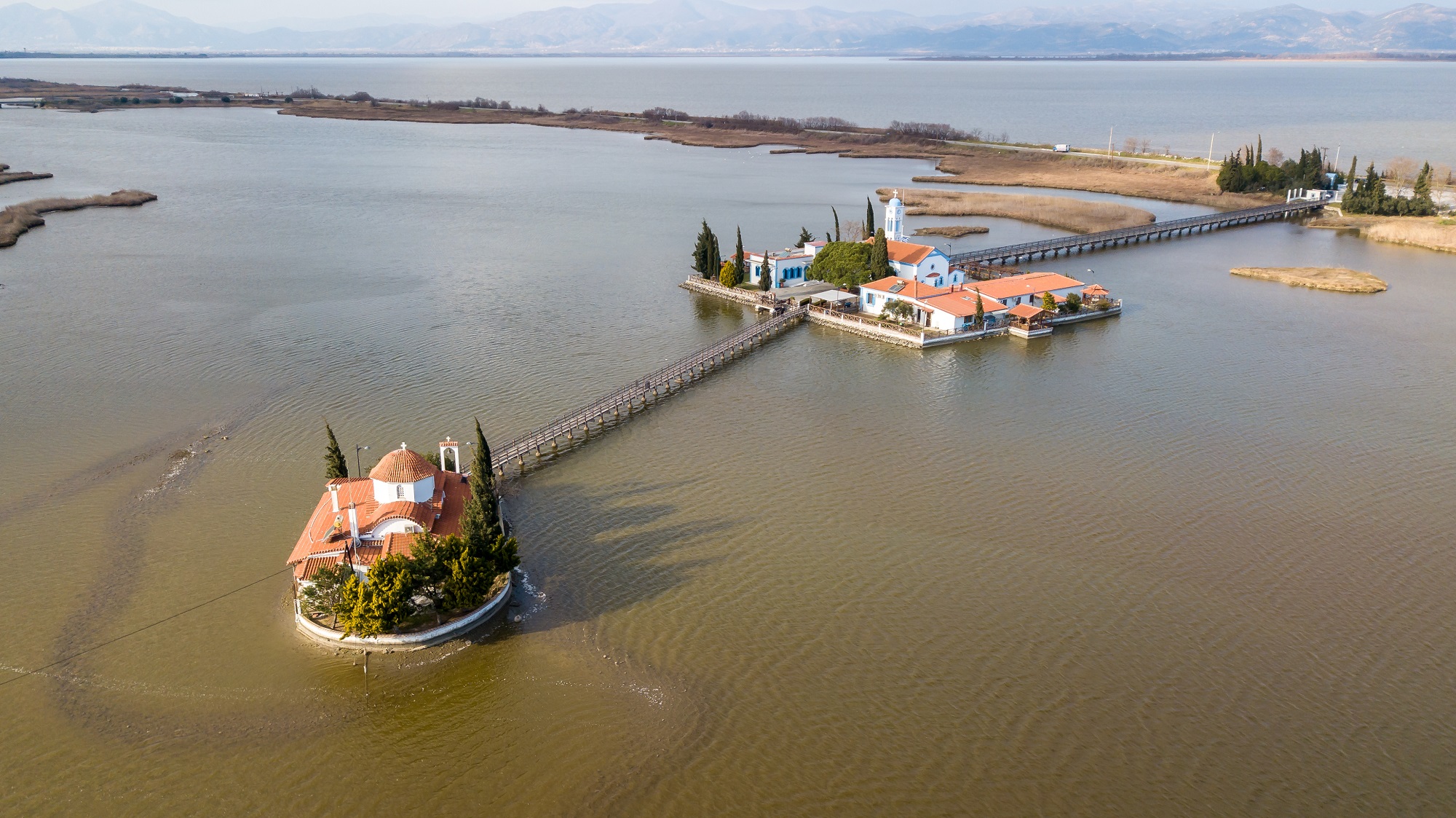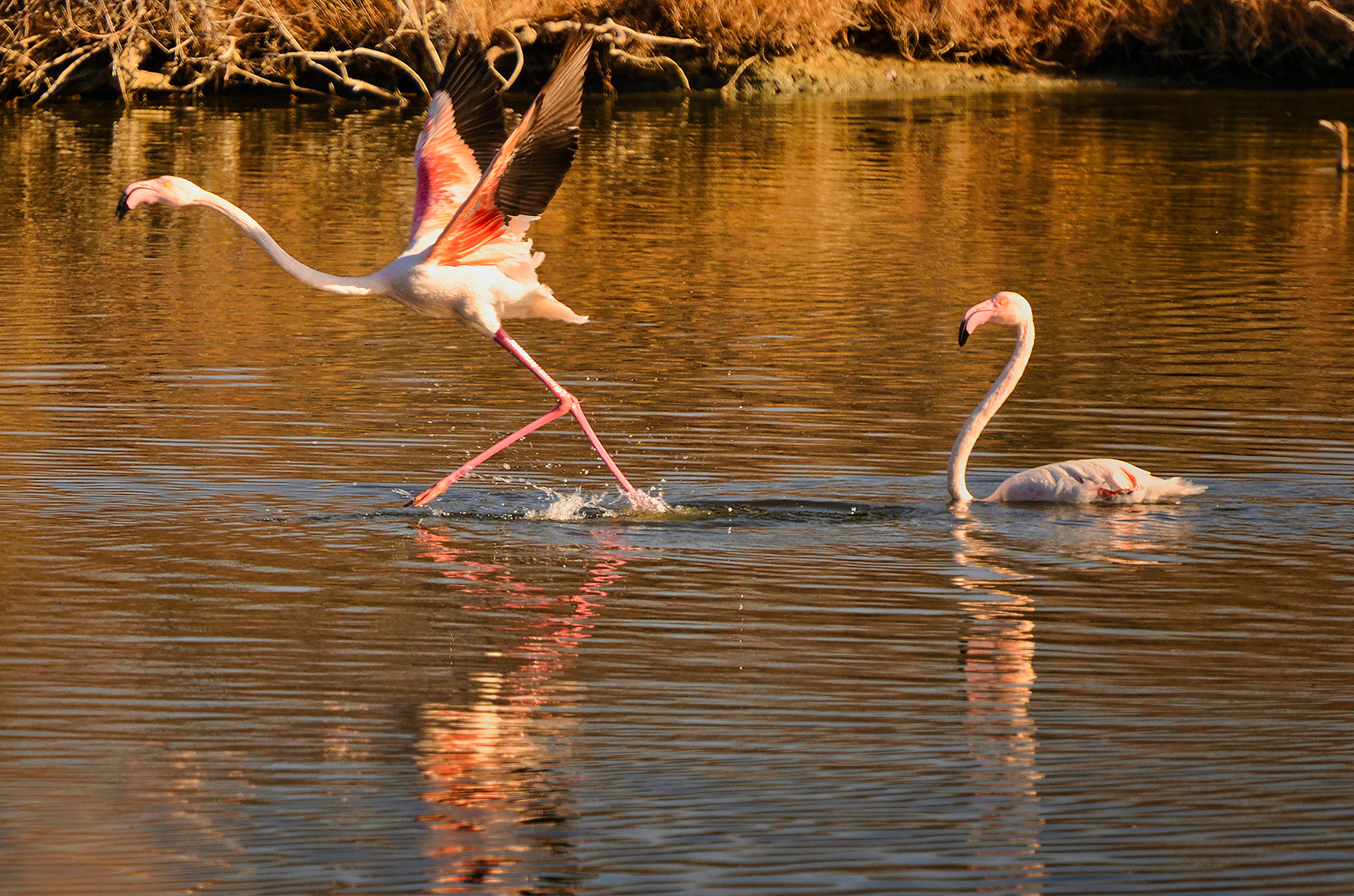The somewhat exotic name that sounds like a port in Latin America together with the idyllic water-filled landscape give Porto Lagos a truly unique character, but it remains generally off the radar for tourists in northern Greece.
The village is located between Xanthi and Komotini and has a population of only just over 300 residents. Access to the village is easy, but there are no large hotels, and there are hardly any tourists.
Despite its small size and the fact that it does not have direct access to the sea, Porto Lagos is a port of great importance for the surrounding area – after all it is the northernmost port in Greece, and its coast is the northernmost Greek coast. There are all the necessary facilities to assist both fish boats and commercial boats, as well as, in more recent years, yachts.
The flamingos and the floating monastery
The two most distinct features of Porto Lagos are the crowds of pink flamingos on its coasts, and the monastery of Agios Nikolaos, standing tall on a small island, creating the impression of literally floating in the water.
The presence of flamingos is due to Porto Lagos’ geography, which does not have direct access to the sea but rather is built on the narrow strip of land that separates Lake Vistonida, the 4th largest lake in Greece and the Thracian Sea, creating a very significant wetland, considered one of the largest in the world.
Flamingos are just one of the 227 bird species recorded in the area, but due to their pink colour and the fact that they tend to gather in large flamboyant groups they constitute a very impressive sight on the calm waters of Porto Lagos, where they come to rest, feed and reproduce. Other birds you can see here are Dalmatian pelicans, storks, as well as rarer occurrences like the pygmy cormorant or the white-headed duck.
The establishment of the monastery of Agios Nikolaos goes back either to the early Byzantine years, or the period of the Ottoman rule that began in the area in 1375. According to one legend, the first monastery was built around 400 AD when the emperor Arcadius wanted to thank Virgin Mary for saving him after a shipwreck. Another legend speaks of a hermit who lived in the area during the Ottoman rule and managed to heal the local bey’s daughter when she fell ill. So, the governor, to thank the hermit, offered the grounds to the Vatopedi monastery of Mount Athos, and in fact, to this day, Agios Nikolaos is still part of the lands that belong to the Vatopedi monastery.
It is often said that the monastery is built on two islands, which is only partly true, since the actual monastery is built on one island, not two, but the whole monastery complex consists of Agios Nikolaos and of the smaller church of Panagia Pantanassa – in which there is a replica of the famous icon of the same name from the Vatopedi monastery – which is indeed built on an island nearby.
In any case, the church and the monastery are handsome and are a unique sight in Porto Lagos. The islands are linked to the mainland and to each other via wooden bridges making it very easy to walk there, without ruining the floating impression.
How to get here
Access to Porto Lagos is easy as it is located just 26km from Xanthi, on the Xanthi-Komotini country road. It takes a 25min drive from Xanthi, while Komotini is 31km away.
However, this lovely fish village is also easily accessible from Thessaloniki, approximately a 2.5-hour-drive away. While it’s not the closest day-trip you can take, it’s certainly quite a unique one.
You can also reach Porto Lagos by boat, whose port presence has increased in recent years with luxurious yachts arriving in the area, especially in the height of summer.
Read also:
Kotza Orman: Extensive, jungle-like riverside forest in Greece’s north
Diros: Mani area cave with spectacular stalactites, route covered by boat



